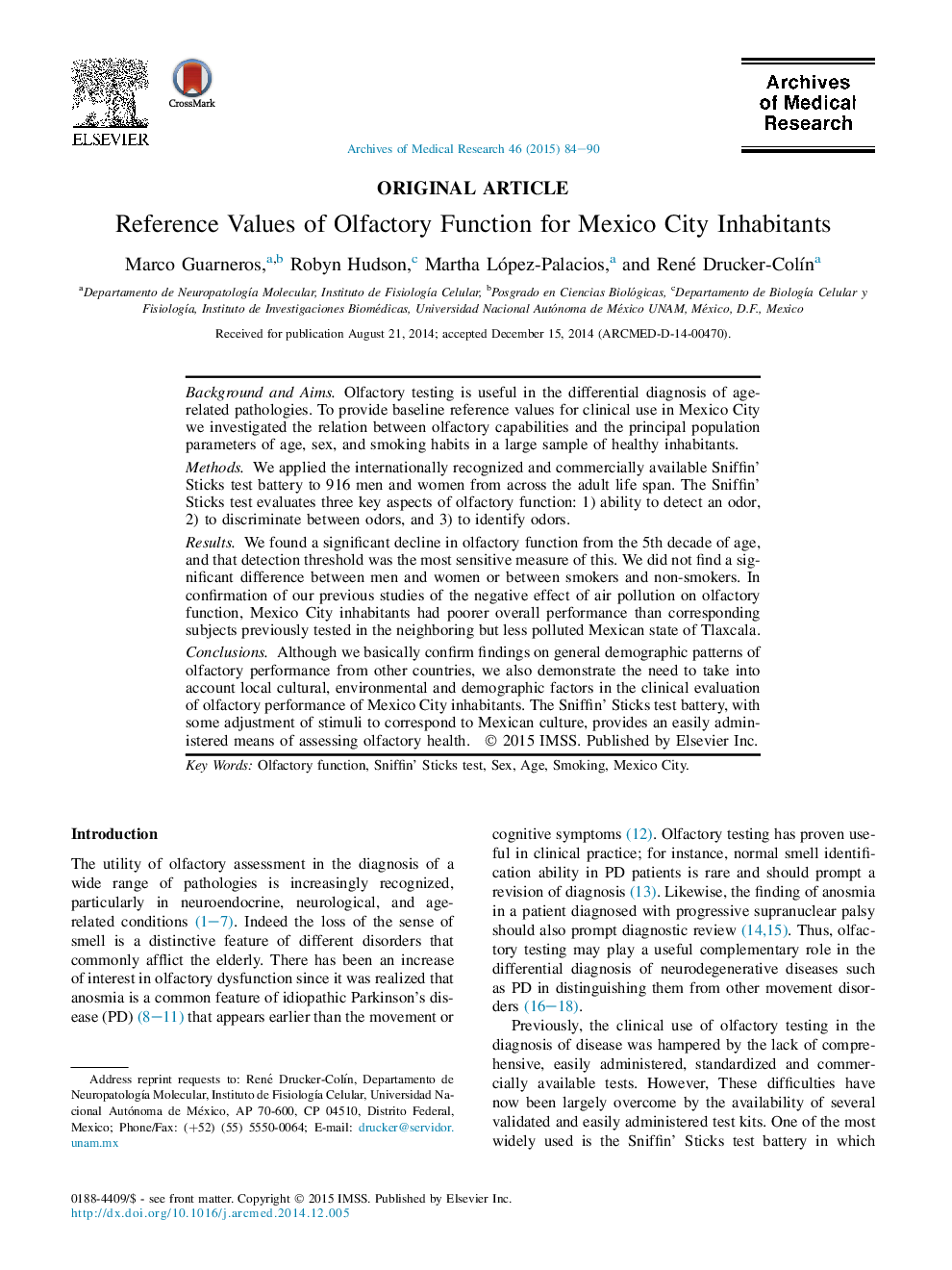| Article ID | Journal | Published Year | Pages | File Type |
|---|---|---|---|---|
| 3446476 | Archives of Medical Research | 2015 | 7 Pages |
Background and AimsOlfactory testing is useful in the differential diagnosis of age-related pathologies. To provide baseline reference values for clinical use in Mexico City we investigated the relation between olfactory capabilities and the principal population parameters of age, sex, and smoking habits in a large sample of healthy inhabitants.MethodsWe applied the internationally recognized and commercially available Sniffin' Sticks test battery to 916 men and women from across the adult life span. The Sniffin' Sticks test evaluates three key aspects of olfactory function: 1) ability to detect an odor, 2) to discriminate between odors, and 3) to identify odors.ResultsWe found a significant decline in olfactory function from the 5th decade of age, and that detection threshold was the most sensitive measure of this. We did not find a significant difference between men and women or between smokers and non-smokers. In confirmation of our previous studies of the negative effect of air pollution on olfactory function, Mexico City inhabitants had poorer overall performance than corresponding subjects previously tested in the neighboring but less polluted Mexican state of Tlaxcala.ConclusionsAlthough we basically confirm findings on general demographic patterns of olfactory performance from other countries, we also demonstrate the need to take into account local cultural, environmental and demographic factors in the clinical evaluation of olfactory performance of Mexico City inhabitants. The Sniffin' Sticks test battery, with some adjustment of stimuli to correspond to Mexican culture, provides an easily administered means of assessing olfactory health.
